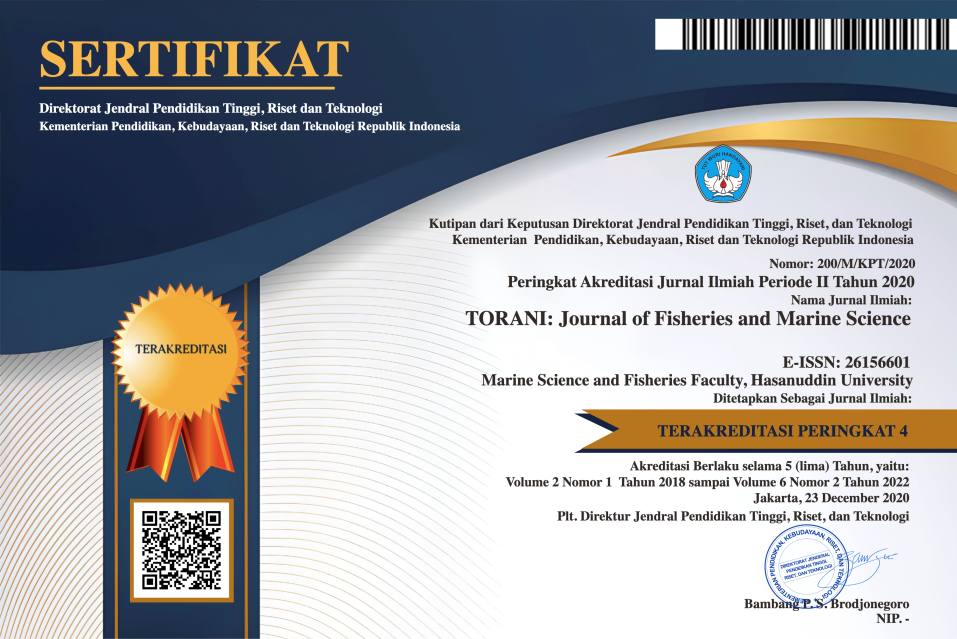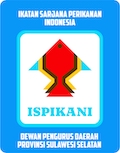The Impact of Coral Conditions on the Structure of the Megabenthos Community Associated with the Coral Reefs of the Spermonde Islands
DOI:
https://doi.org/10.35911/torani.v3i1.11364Keywords:
coral, coral coverage, mega-benthos, abundance, diversityAbstract
Coral reefs are organisms that live on the bottom of the waters and are in the form of limestone (CaCO3) which is strong against sea waves so that it can prevent coastal erosion and is also a place for various types of animals associated with coral reef ecosystems that utilize coral polyps. as his food. Mega-benthos are biota / organisms with a size of more than 1 cm that live on or in the seabed, including the sticking, creeping and burrowing biota that is visible with the camera. The research was conducted using the Line Intercept Transect Method and the Benthos Reef Check Method. The results showed that the highest percentage of live coral cover was found on Badi Island 71.46% (Good coral condition category), the moderate coral condition category was represented by Kapoposang Island (46.02%) and the bad coral condition category was represented by Ballanglompo Island ( 7.92%). The highest diversity of species (H ') Mega-benthos is at station 3 (Badi Island) with the value of H' = 2.528 while the lowest is at station IV (Lumu-lumu Island) with the value of H '= 0.6365. So that the category of the megabenthos species diversity index in the research location can be said to be in the low to moderate category.















